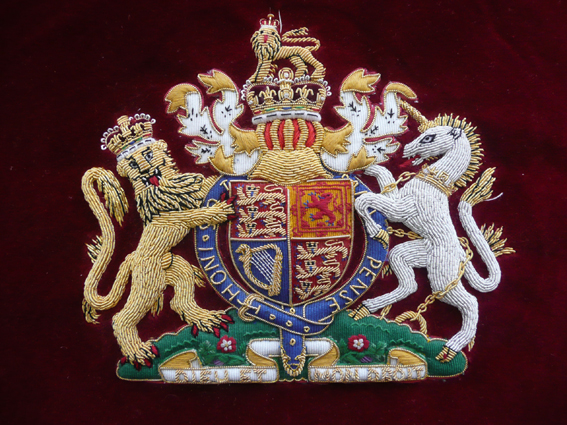Royal Coats of Arms
The first king to have a connection with the Royal Coat of Arms was King Richard I, who owned it from 1189-1199.
Richard’s coat of arms featured three lions or ‘gules three lions passant guardant’ and dictated the way every royal coat of arms would be set out throughout the reigns of King John, King Henry III, and King Edward I.
It was during Edward III’s reign between 1327-1377 that the royal coat of arms were first change. After claiming the French throne, he decided to split the design into quarters to include an English section in the top right and bottom left, and the French ‘fluers-de-lis’ on the top left and bottom right.
Richard II decided to add Edward the Confessor’s arms but Henry IV, who reigned between 1399 and 1405, chose to use Edward III’s original design. Before his reign was over, Henry changed the coat of arms to reduce the number of fleur-de-lis to just three in each section. This final design remained largely unchanged for many hundreds of years, with only small changes made by monarchs who wanted different supporters such as stags, boars, bulls and dragons. The tudors also chose to include the famous Tudor rose, while Mary I chose a pomegranate in memory of her mother.

A significant change to the coat of arms came in 1603, at the end of Tudor England, when James I took the throne. James introduced the Scottish lion (rampant) framed by a double pressure at the top right quarter and a fleur-de-lis on each corner. The Irish harp was also included in the bottom left corner to represent his rule over Ireland.
This coat of arms was the foundation throughout the Stuart dynasty, with the only significant change taking place during Queen Anne’s reign between 1702-1714. During this time, England and Scotland united as a single country and both the top left and bottom right quarters were changed to merge three lions guardant and the Scottish lion rampant. The Irish harp then remained in the bottom left, while the fleur-de-lis remained in the top right.
The only significant disturbance to the use of the royal coat of arms came during the Interregnum, 1649-1660. During this time, the monarchy and arms were removed, so parliament adopted a coat of arms of its own. This included two silver quarters with a red cross to represent England and Wales, one quarter that was blue with a gold harp and silver strings to represent Ireland, and a final quarter with the blue and white flag of Scotland. In the centre was a silver lion on a black background, which represented Oliver Cromwell’s arms.
See also:
MLA Citation/Reference
"Royal Coats of Arms". HistoryLearning.com. 2024. Web.
